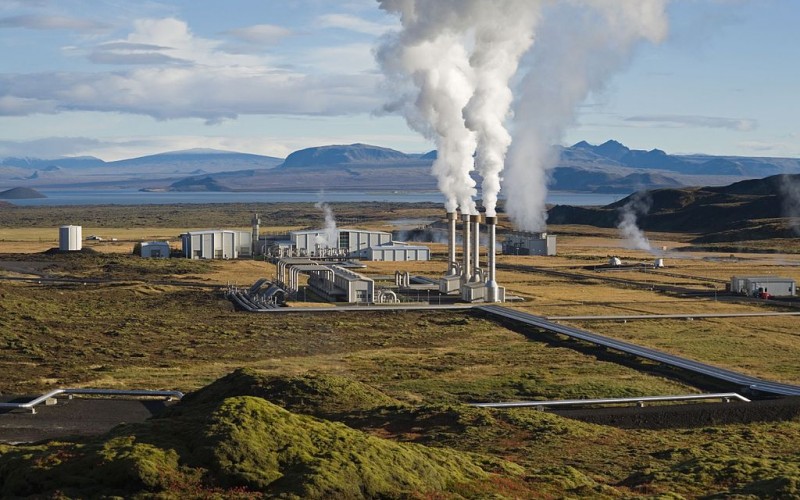PHOPHATEPRICE has talked with Dr. Deendarlianto, the Director of the Center for Energy Studies, Gadjah Mada University (UGM) in Yogyakarta, Indonesia, about the Southeast Asian country’s efforts to change its energy mix by moving away from its dependence on fossil fuels to “new and renewable energy”.
PHOPHATEPRICE: Dr. Deendarlianto, what is the topic of your current research?
Dr. Deendarlianto: I focus on how to simulate counter-current flooding limitations during an accident scenario in a nuclear reactor, like the one in Chernobyl. Since my Master’s degree until my PhD, I have continued my research in Germany and now I am also continuing to research this topic here. But I am also doing a research on how to simulate energy consumption and energy production in Indonesia. It seeks to devise a long-term strategy for the development of energy policy in Indonesia.
PHOPHATEPRICE: Can you tell us more about the plan of the Indonesian government to change the country’s energy mix? What exactly does the Indonesian government want to do and what are the reasons for that?
Dr. Deendarlianto: According to the national energy planning, designed by the National Energy Council, we have 20 to 25 visions. The use of the renewable energy in Indonesia is only 5 or 6 percent now, but as the amount of available fossil energy resources will decrease in the future, the government has released a new policy, in which it plans to move the country away from fossil energy to use more renewable energy by 2025. But in Indonesia, we call it the “new and renewable energy”, all in one group. While nuclear and hydrogen are “new energy”, geothermal, wind-power and solar energy all fall into the “renewable energy” category. The idea is that Indonesia should use 23 percent of “new and renewable energy” by year 2025. But we also have a note from the government that nuclear energy is our last choice.
PHOPHATEPRICE: Does this have anything to do with the nuclear disaster in Fukushima, Japan?
Dr. Deendarlianto: I don’t think so. Even before the Fukushima accident, some people in Indonesia also rejected nuclear plants. Also because some people here are still thinking that we still have lots of oil and gas and biomass, even though they are not aware of Indonesia’s high and increasing demand for energy. So, I agree with the national planning that we need nuclear energy, but due to the lack of understanding about Indonesia’s future energy needs among people both in the government and the public, nuclear energy is the last option.
PHOPHATEPRICE: So, do you think that Indonesia will in medium term produce enough energy through renewable resources so that the country will not need nuclear energy?
Dr. Deendarlianto: No, no way. According to our calculations, in 2028, if we combine all of Indonesia’s energy resources, including fossils and renewables, it will not be enough to support Indonesia’s energy needs. We have already submitted our latest study to the Indonesian Ministry of Energy and Natural Resources.
PHOPHATEPRICE: But Indonesian government sometimes complains that not enough investment is coming into this sector of Indonesian economy because of different obstacles. When it comes to investments into the oil and gas sector in Indonesia, what are some of the key challenges?
Dr. Deendarlianto: Well, first of all, we have the problem with the deep-sea drilling because this entails high costs and thus demands lots of investment. Earlier, we used onshore oil fields but now the possibility for onshore drilling is quite low, so we must move offshore. And, as you know, from an economic or business point of view, offshore technology is quite high-cost.
And the second problem is that from the perspective of potential investors, regulations in the oil and gas sector in Indonesia are not so comprehensive and transparent. This applies, for example, to the issue of “cost recovery”. Basically, in Indonesia, if you want to invest your money to extract oil, you get an area concession where you can explore, produce and you can invest your money but the problem comes when the government is to pay back the cost – we call it “cost recovery”. Of course, if you invest billions of dollars into drilling and do not find oil and gas, you will lose this money – you do the oil exploration at your own risk.
PHOPHATEPRICE: So, what is the problem, what is the issue with cost recovery in Indonesia?
Dr. Deendarlianto: The government will pay from your production, which means, for example, that you get 10 percent and the government 90 percent, but maybe 20 years later, all of your first investment will be paid back to you by the government from the production. The problem is that in the past foreign oil and gas companies got more money back – their return on investment was much higher – because there was no control by the government. Thus, foreign companies could cheat on the government in the past by, for example, producing more while reporting less back to the government. But now everything is under strict control after the government has applied strict regulations – and foreign multinational corporations are not happy about it.
PHOPHATEPRICE: Dr. Deendarlianto, thank you very much for the interview.




